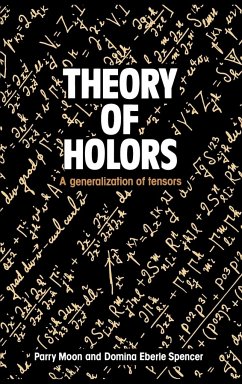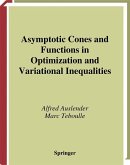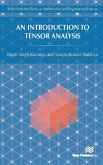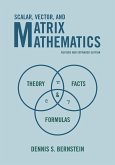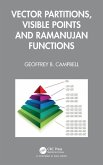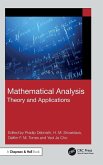The word holor is a term coined by the authors to describe a mathematical entity that is made up of one or more independent quantities, and includes complex numbers, scalars, vectors, matrices, tensors, quaternions, and other hypernumbers. Holors, thus defined, have been known for centuries but each has been developed more or less independently, accompanied by separate nomenclature and theory. This book demonstrates how these complicated subjects can be made simple by using a single notation that applies to all holors, both tensor and nontensor. The authors consider all possible types of holors and develop holor algebra and holor calculus in the most general sense. Thus the reader will learn to develop a new holor that fits the application, rather than forcing an application onto a holor representation that is known but that does not perfectly describe the application. The discussion includes nontensors having no transformation and holors that transform in more complicated ways than allowed with ordinary tensors. This opens up the possibility to devise a holor for a new physical application, without being limited to a few conventional types of holor. This book should establish a method by which students and teachers can learn vector and tensor analysis via a uniform treatment. Graduate students and professionals in engineering, physics. applied mathematics, chemistry, biology, psychology, and other analytical sciences should find this to be a useful and innovative work.
Table of contents:
Preface; Nomenclature; Historical introduction; Part I. Holors: 1. Index notation; 2. Holor algebra; 3. Gamma products; Part II. Transformations: 4. Tensors; 5. Akinetors; 6. Geometric spaces; Part III. Holor Calculus: 7. The linear connection; 8. The Riemann-Christoffel tensors; Part IV. Space Structure: 9. Non-Riemannian spaces; 10. Riemannian space; 11. Euclidean space; References; Index.
Holors, thus defined, have been known for centuries but each has been developed more or less independently, accompanied by separate nomenclature and theory. This book demonstrates how these complicated subjects can be made simple by using a single notation that applies to all holors, both tensor and nontensor.
Establishes a method by which students and teachers can learn vector and tensor analysis by a uniformed treatment.
Hinweis: Dieser Artikel kann nur an eine deutsche Lieferadresse ausgeliefert werden.
Table of contents:
Preface; Nomenclature; Historical introduction; Part I. Holors: 1. Index notation; 2. Holor algebra; 3. Gamma products; Part II. Transformations: 4. Tensors; 5. Akinetors; 6. Geometric spaces; Part III. Holor Calculus: 7. The linear connection; 8. The Riemann-Christoffel tensors; Part IV. Space Structure: 9. Non-Riemannian spaces; 10. Riemannian space; 11. Euclidean space; References; Index.
Holors, thus defined, have been known for centuries but each has been developed more or less independently, accompanied by separate nomenclature and theory. This book demonstrates how these complicated subjects can be made simple by using a single notation that applies to all holors, both tensor and nontensor.
Establishes a method by which students and teachers can learn vector and tensor analysis by a uniformed treatment.
Hinweis: Dieser Artikel kann nur an eine deutsche Lieferadresse ausgeliefert werden.

